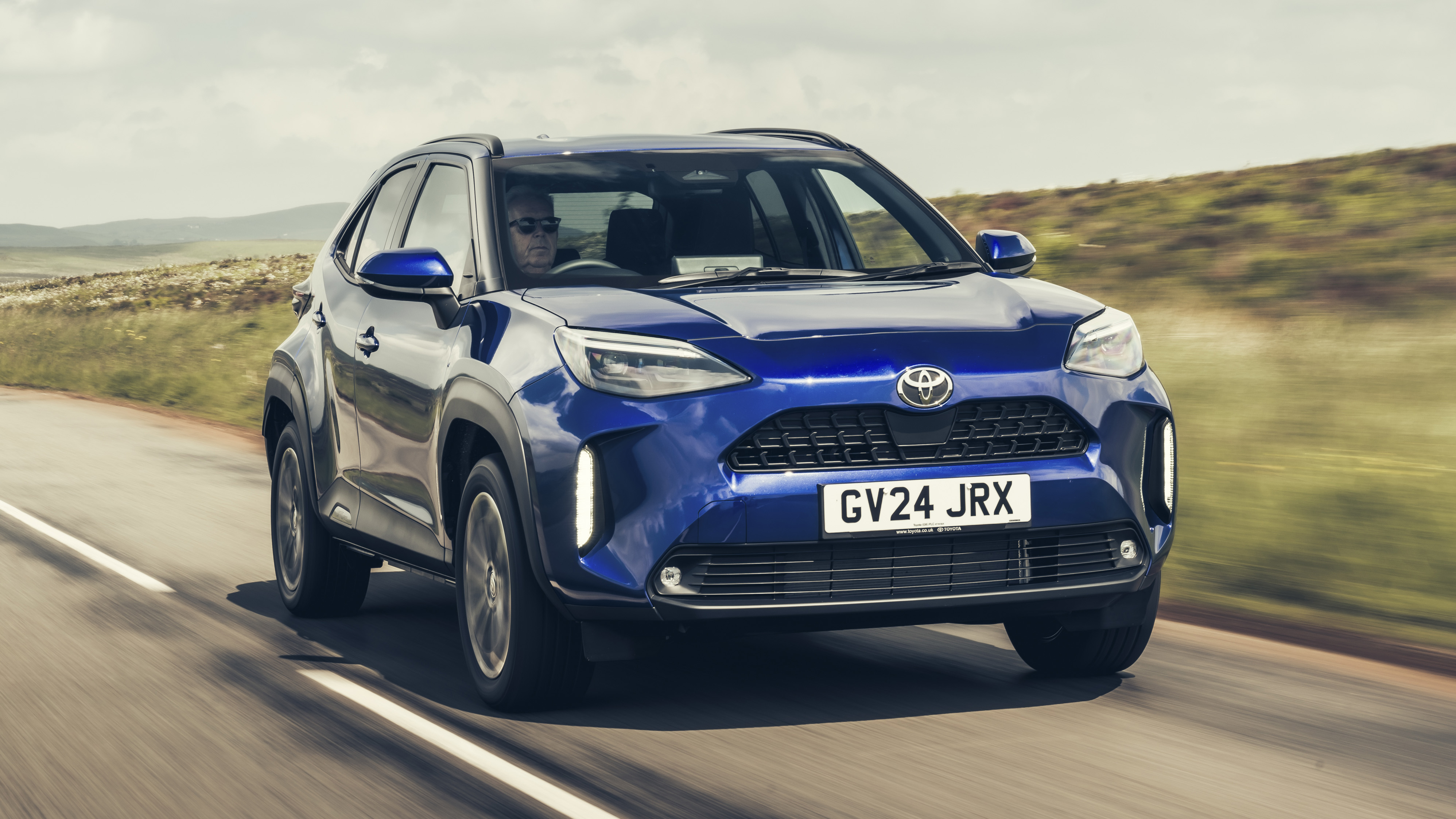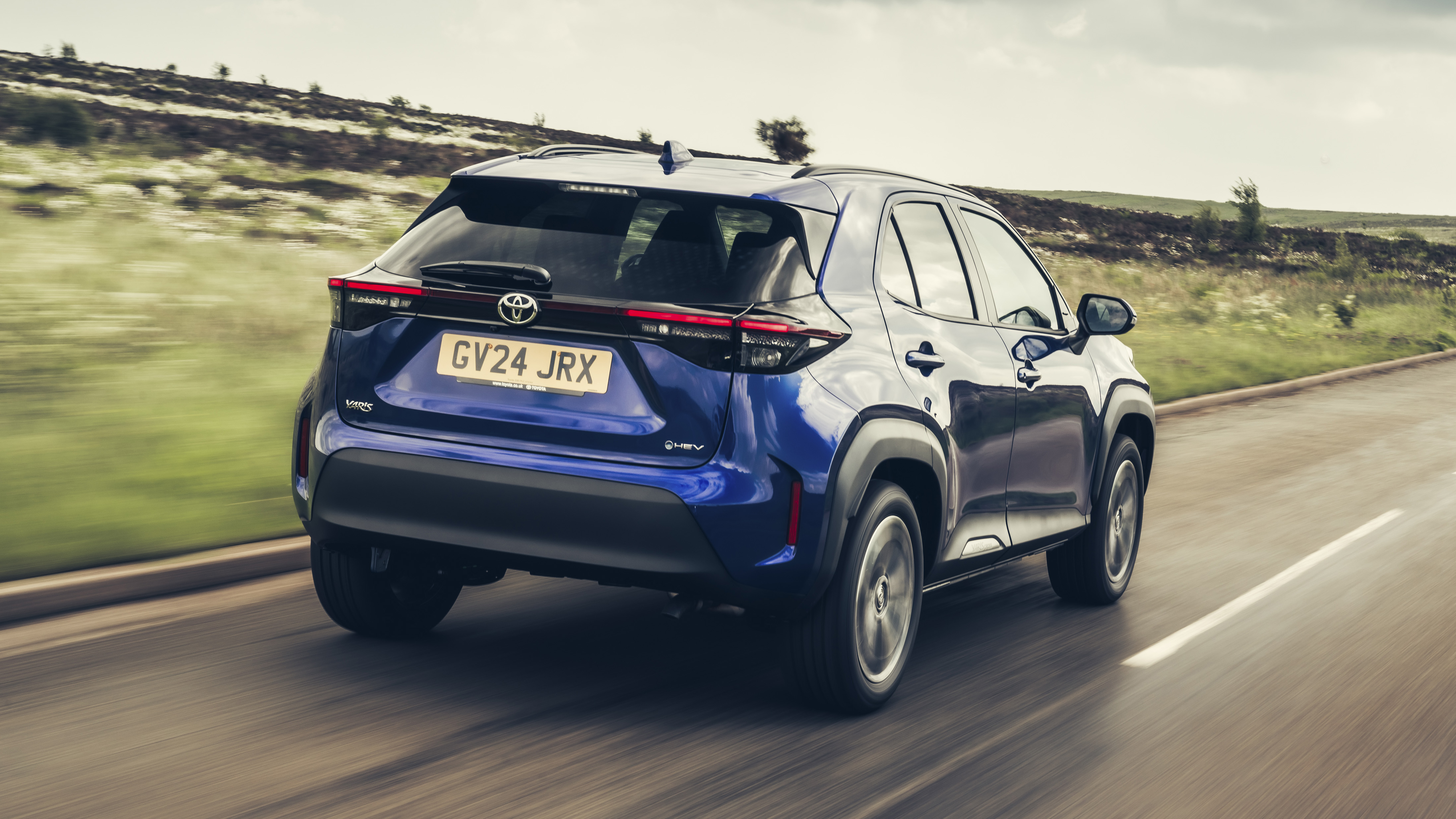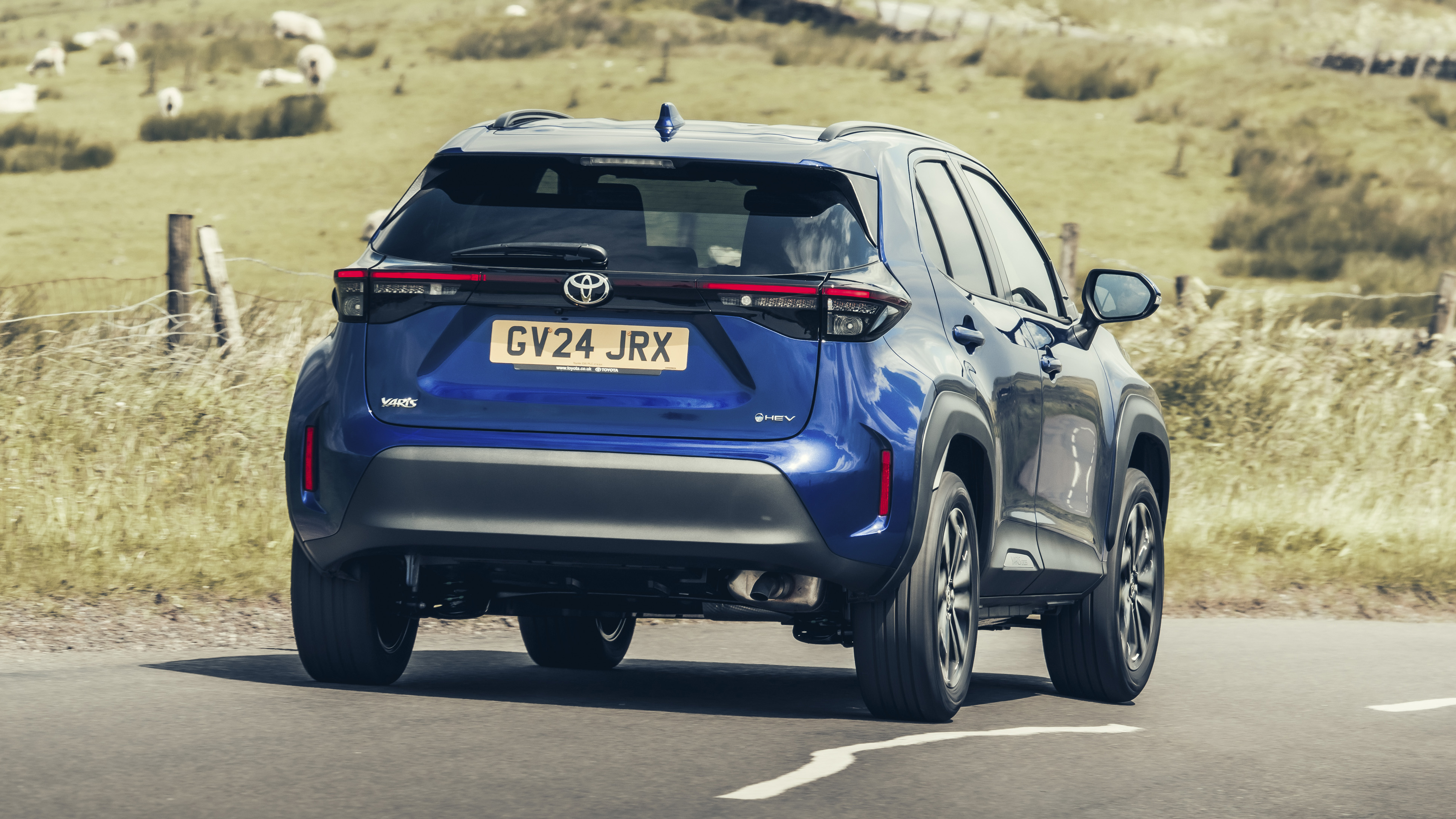
Good stuff
Hybrid stuff works well, it's reasonably spacious, easy to drive
Bad stuff
Polarising looks, occasionally sluggish performance, slightly tired interior
Overview
What is it?
Remember the Toyota Urban Cruiser? Thought not. It was, more than a decade ago, Toyota's first stumbling attempt at a small crossover. But it was too boring and not very cross-y. Toyota slunk away. Then back in 2020 someone at HQ cottoned on to the huge boom in these things, and the Yaris Cross was born.
It shares its mechanics and wheelbase with the Yaris, but not the visible bodywork. It's bigger, not just taller: 20mm wider and 240mm longer. Rivals include the Lexus LBX, with which it shares its underpinnings and hybrid setup, plus the Ford Puma, Nissan Juke, Renault Captur, Skoda Kamiq and Volkswagen T-Cross.
Great, so it’s a taller, duller driving Yaris?
Ooft, harsh. The Cross uses the same TNGA platform that underpins a load of other Toyotas and has been credited with making them much more fun to drive than in recent years, and it gets the same 1.5-litre 3cyl engine paired with a fancy hybrid set-up. Hybrids were of course the thing that Toyota actually did get working on years before everyone else clocked on.
Is the normal Yaris getting the chop then?
No, the supermini (a kind of car we like very much) lives on. The Yaris is a good and modern one, and anyhow Toyota says that the cars appeal to very different audiences.
Right in the middle of the Cross’s, er, crosshairs are school runners, looking for something stylish but easy to use. Styling is of course a very personal, subjective matter: some of the TG team think the Yaris Cross looks alright for what it is, others think... less so. It’s got a manga Volvo XC40 thing going on with its bluff front and rear and even the squared wheel arches have a first-gen RAV4 vibe.
So there's just the one engine option?
Two, actually. As of 2024, there's 114bhp and 129bhp outputs available. Both get the same 1.5-litre engine, the latter just gets a more powerful electric motor.
Whichever you go for, the principle will be familiar to anyone who has driven a Toyota hybrid in the last 15 years or so. It’s all very simple: go, stop, and the computer works out how much you can do without the engine running. There are two engine modes, which do exactly what they say on the tin: you’ve got Eco or PWR, which is so eager to get going it doesn’t even have all its letters.
Unusually for a crossover this small, you can also opt for a 4WD version. This has an additional electric motor that drives the rear wheels.
How does it drive?
The Yaris Cross feels both lighter and nimbler than you might expect. Maybe we’ve just driven too many heavy cars recently; its 1,200 kilos or so make it a touch heavier than a Juke, say. There’s instant turn as you move the wheel, which makes the car feel assertive on a country lane or around town. We got about 53mpg out of the car on our route of mixed urban and country roads with a few junctions-worth of motorway thrown in.
Thing is, it's heavier and draggier than the Yaris supermini itself, so you lose about 10mpg and about a second in the zero to 62mph sprint. It just proves the universal law that crossovers aren't as much fun nor as efficient as the hatches they're based on.
The ride is also a bit busy. That said, while it jiggles rather at town speed, it does deal with big bumps and higher speeds fairly well.
Is it expensive?
Prices start from £25,530 in base-spec Icon trim, rising to £32,500 in new for 2024 range-topping Premiere Edition.
Which trim you go for dictates which hybrid powertrain you go for: Icon, Design and Excel get the 114bhp version, GR Sport and Premiere Edition get the 128bhp unit. Full details over on the Buying tab.
What's the verdict?
Toyota has played a decent hand here. The exterior is bold and different without being divisive, but don’t be fooled by the rugged looks: it's not an off-road workhorse, nor is it meant to be. Even with four-wheel drive.
OK, the Yaris Cross's slightly tired cabin doesn't have the flair of some rivals, but it’s comfortable, practical and spacious enough, and the neat touches such as the rubber-lined seatbacks and boot help protect from all that family life has to throw at it.
Toyota’s hybrid set-up makes it far from the best to drive in its sector (even if it's slightly better than previous efforts), but it does at least offer an economical alternative for those who don’t have the budget or the stomach to go fully electric just yet.
The Rivals
Trending this week
- Car Review
BMW iX3









